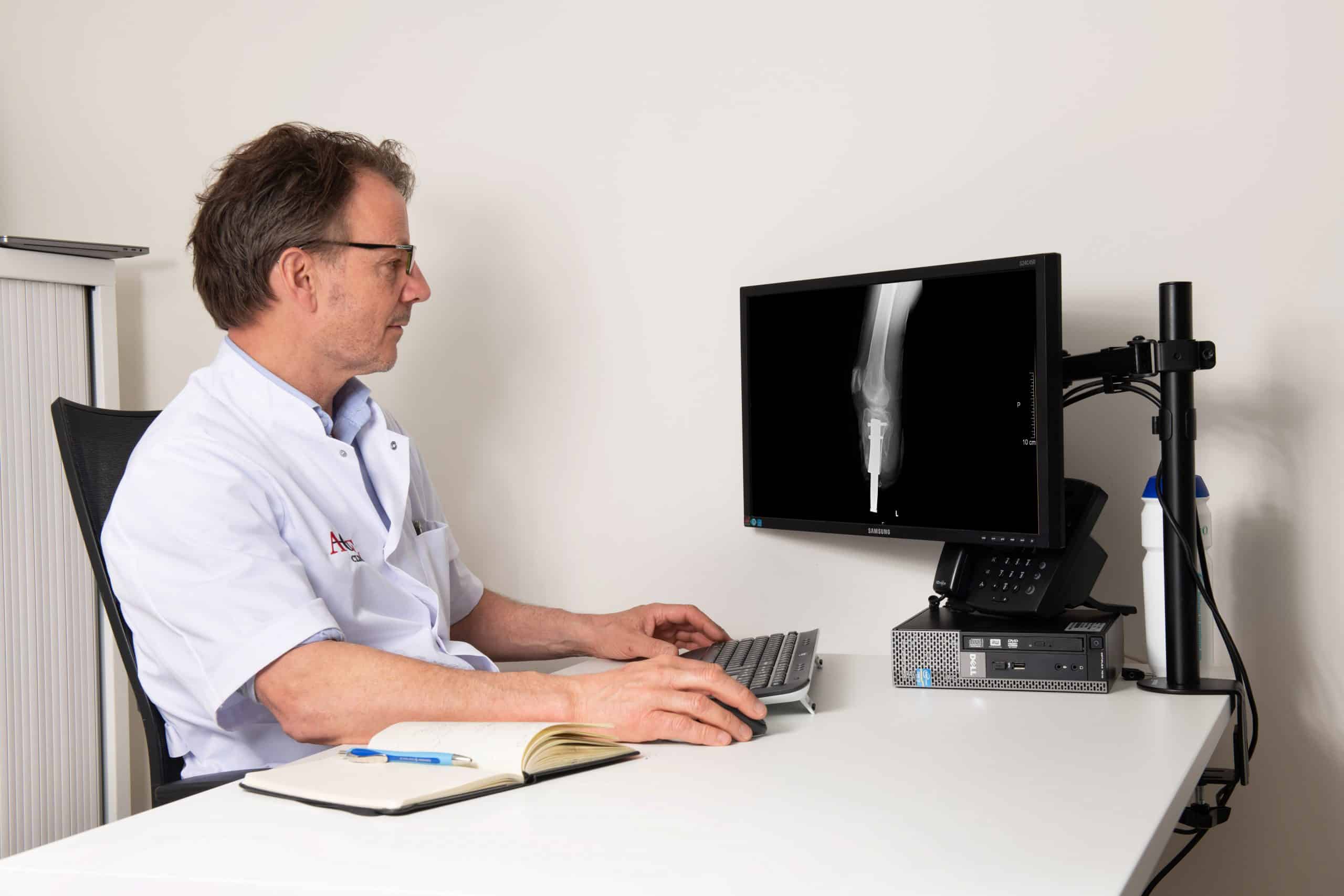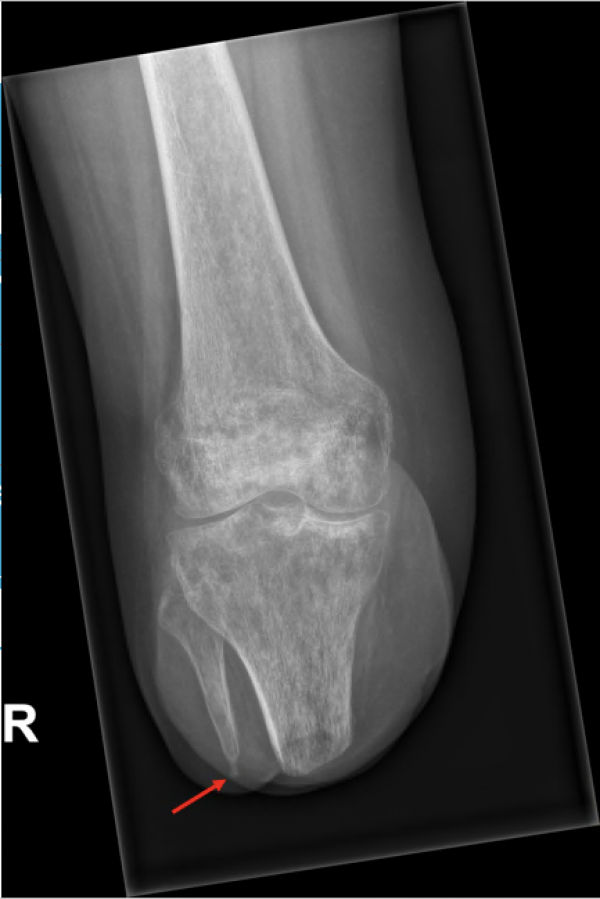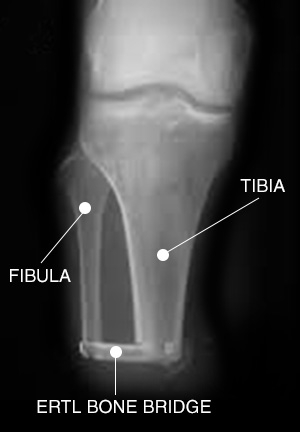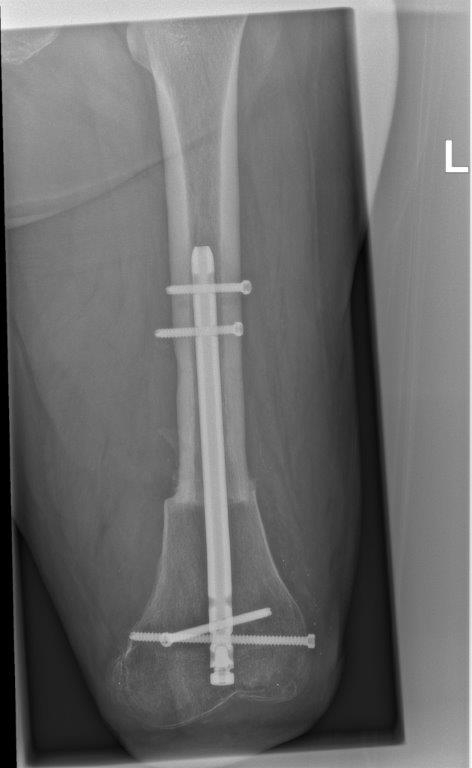
Stump revision with or without osseointegration
What is a stump prosthesis
A stump revision surgery is a medical procedure that involves making alterations or modifications to a residual limb, commonly referred to as a stump, that remains after an amputation. The revision surgery is typically performed to improve the function, comfort, or appearance of the residual limb for individuals who have undergone amputation. The surgery may involve several different types of procedures, depending on the specific needs of the patient and the reason for the revision.
Request a second opionion
Over time, the amputation stump may change to the extent that the fit in the socket becomes an increasing problem. Not only does bone quality deteriorate, but the soft tissue also become more fragile, making exostoses more sensitive and the stump less able to withstand the friction forces caused by the socket. Despite various adjustments to the socket by your prosthetist, you tolerate the prosthesis less well and take it off as soon as you get the opportunity (after a working day). In this case, it may make sense to request a second opinion at our clinic and let our experienced amputation team assess your situation. Of course, you may be a suitable candidate for osseointegration treatment but, in some cases, a relatively simple surgical treatment can make huge gains that will restore your mobility with your conventional socket prosthesis and have less residual limb.
Shortening the fibula
The fibula no longer has any function after a lower leg amputation and can become increasingly painful in the prosthetic socket due to fragile skin or excess soft tissue. The prosthetist often has to adjust the socket and add extra padding to make walking possible. By surgically shortening the calf bone slightly, a relatively simple operation can solve this problem with or without a Targeted Muscle Reinnervation.

Ertl reconstruction
This stump revision surgery involves making a bone bridge between the tibia and fibula provided it is of sufficient length. This method aims to make the stump more (end) loadable and improve rotational stability, allowing you to benefit more from the conventional socket prosthesis.

Shortening after knee exarticulation
In some cases, amputation through the knee (exarticulation) is a better choice than above the knee (transfemoral). This is mainly due to the extra length of the stump allowing more stability in the socket but also because this stump (unlike transfemoral) is, in principle, end-loadable. The major disadvantage of knee exarticulation is the fact that wearing a prosthetic leg with built-in knee joint means that this knee sits at a lower level. Depending on the built-in height, this can be 12 to 15 cm. This need not impair the quality of walking but sitting is downright awkward with particular problems in public transport or in cinemas and theatres. Of course, this can be an excellent indication for osseointegration but it is also possible to do a revision with shortening of the femur and preservation of the end load and condyle block. This involves removing a 12-15 cm segment of bone between the hip and knee with subsequent fixation by pin or plate with screws.

Who is eligible for stump revision?
- Mechanical complaints when using the prosthetic socket
- There is a clear causal relationship between the complaints and the findings on clinical and/or imaging examination
Who is not eligible for stump revision?
- The complaints associated with the use of the socket prosthesis cannot be explained mechanically
- If no causal relationship can be demonstrated between the complaints and the findings on clinical and/or imaging examination
Potential benefits of a stump revision may include:
- Reduction of stump pain
- Improvement of mobility in the socket prosthesis
- Reduction of skin/soft tissue irritation on the residual limb
Potential complications of a stump revision may include:
- Retention of (some) of the complaints as before the operation
- Wound or superficial stoma/skin infection after surgery
- Need repair/revision surgery
At AOFE Clinics, we understand that the success of a prosthesis fitting relies heavily on the condition of the residual limbs for the amputee patient. That’s why we are proud to offer specialized services in stump prosthesis revision, ensuring optimal result, content patients, and improved overall health for amputees.
Our experienced surgeons and prosthetic experts work closely together to provide a comprehensive assessment of the residual limb. This assessment includes evaluating the stump’s shape, tissue condition, blood circulation, and the presence of any neuromas. By understanding each patient’s unique needs, we develop a personalized treatment plan to optimize prosthesis fitting and enhance overall function. Prosthesis revision plays a vital role in addressing issues that can arise after an amputation. These issues may include discomfort, pain, neuroma formation, phantom limb sensations, and difficulties with prosthesis wear. Our specialized services aim to alleviate these main challenges, ultimately improving the lives of individuals with limb loss.
Revision and prosthesis refinement are vital components of our comprehensive care at AOFE Clinics. Based on a recent university study, it has been shown that frequent revisions not only prevent complications such as infection and scars but also ensure an effective and energy-efficient connection between the residual limb and the artificial limb. Our skilled team follows a meticulous design process, taking into account individual conditions and physical needs. Through these short, yet crucial, follow-up procedures carried out every few months, patients experience enhanced daily comfort and mobility, ultimately leading to an improved quality of life. Our commitment to providing these services extends to working closely with insurance providers to make sure our patients’ care is financially stress-free and accessible.
In terms of research and advancements in the field, AOFE Clinics takes pride in staying at the forefront. We actively contribute to scientific publications, sharing important findings and innovative techniques that directly benefit patients with traumatic amputations. One such breakthrough, called “muscle-direct integration,” has demonstrated exceptional results. By creating a direct connection between the prosthetic limb and the muscles of the residual limb, this type of integration has shown significant improvements in control, stability, and overall functionality. This advancement highlights the importance of avoiding poor access to care, as such cutting-edge solutions can be crucial for patients to skip potential complications and avoid long-term difficulties.
Our expertise in prosthesis revision
With a dedicated team of professionals, including experienced surgeons and prosthetic experts, AOFE Clinics provides comprehensive care for patients requiring prosthesis revision. We have extensive knowledge and expertise in managing a variety of issues related to the residual limb area, including pain, formation, and general limb health. At AOFE Clinics, we are committed to staying at the forefront of medical advancements and utilizing the latest techniques and technology in stump prosthesis revision. Our team continuously learns and adopts innovative practices to provide our patients with the top-quality care they deserve. We combine expertise in medicine, surgery, and rehabilitation to deliver comprehensive solutions for amputees.
Services we offer
- Assessment and Evaluation: Our experts conduct a thorough assessment of the residual limb, taking into account factors such as shape, tissue condition, and patient feedback. This evaluation allows us to develop an individualized plan for stump prosthesis revision that meets the unique needs and goals of each patient.
- Surgical Interventions: In cases where surgical intervention is required, our skilled surgeons perform open and meticulous procedures to address any issues affecting the residual limb. This may include addressing painful areas, scar tissue management, or reshaping the limb for better prosthesis fitting.
- Prosthesis Fitting and Adjustment: After the stump prosthesis revision, our prosthetic experts work closely with patients to ensure a proper fit and alignment of their new prosthesis. We understand the importance of a comfortable and functional prosthesis, and we strive to optimize its performance for improved mobility and independence.
- Post-Revision Care and Support: At AOFE Clinics, our commitment to patient care extends beyond the surgical procedure. We provide comprehensive post-revision management, including ongoing monitoring, wound care, and rehabilitation support to facilitate a smooth recovery process. We do not do this in a hospital but in a specialised recovery clinic.
Improving lives, one revision at a time:
At AOFE Clinics, we recognize that the healing and adaptation process following limb amputation, including knee amputation, involves not only the initial surgical procedure but also subsequent stages of care. Stump revision and the fitting of a custom stump prosthesis are integral parts of our comprehensive approach to ensuring patients’ long-term well-being. Our experienced team understands the unique challenges that patients undergo after limb amputation, and we work closely with them to address any issues that may arise. Stump revisions are meticulously performed to optimize healing and functionality, while our expert prosthetists craft custom stump prostheses tailored to each individual’s anatomy and needs. By providing specialized care and innovative solutions, we strive to enhance the quality of life for our patients and support their journey towards regaining optimal function and mobility. We believe that a well-fitted and properly functioning prosthesis can make a significant difference in the lives of amputees. Our specialized stump prosthesis revision services are designed to address issues that may arise post-amputation, ensuring maximum comfort, reduced pain, and enhanced functionality. We are dedicated to restoring confidence and empowering patients to live life to the fullest with the search for best practises.
Get in Touch with Our Experts
If you are experiencing discomfort, pain, or functional limitations with your current prosthesis, AOFE Clinics is here to help. Our specialized team is ready to provide the expertise and care required for stump prosthesis revision. To address discomfort and improve functionality in the amputated stump, AOFE Clinics offers specialized nerve and plastic surgery revisions; schedule your appointment today to explore your options.
